
I'm NO baker - but I do LOVE wine! So any recipe I discover that's even remotely related to wine...well, I feel a responsibility to explore it further. Especially when it looks outrageously delicious!
Such was the case with the Canelé, a delightful French pastry known for its mahogany, burnt sugar crust and contrasting decadent, custardy center. Typically flavored with rum and vanilla, these beauties are baked in a special Canelé mold to achieve their hallmark striated, cylindrical shape.
Are you wondering where the wine comes in yet?
The Canelé originated in Bordeaux, a region many wine lovers adore due to its legendary full-bodied, age worthy red wines. Well, critical to the production of these wines is a process called "fining" in which a compound, usually egg whites, is added to the wine which binds to any potentially harmful chemicals. To get geeky, the positively charged albumin in the egg whites binds to negatively charged, undesirable polyphenols in the wine which then congeal and settle to the bottom of the barrel where they can be easily removed.

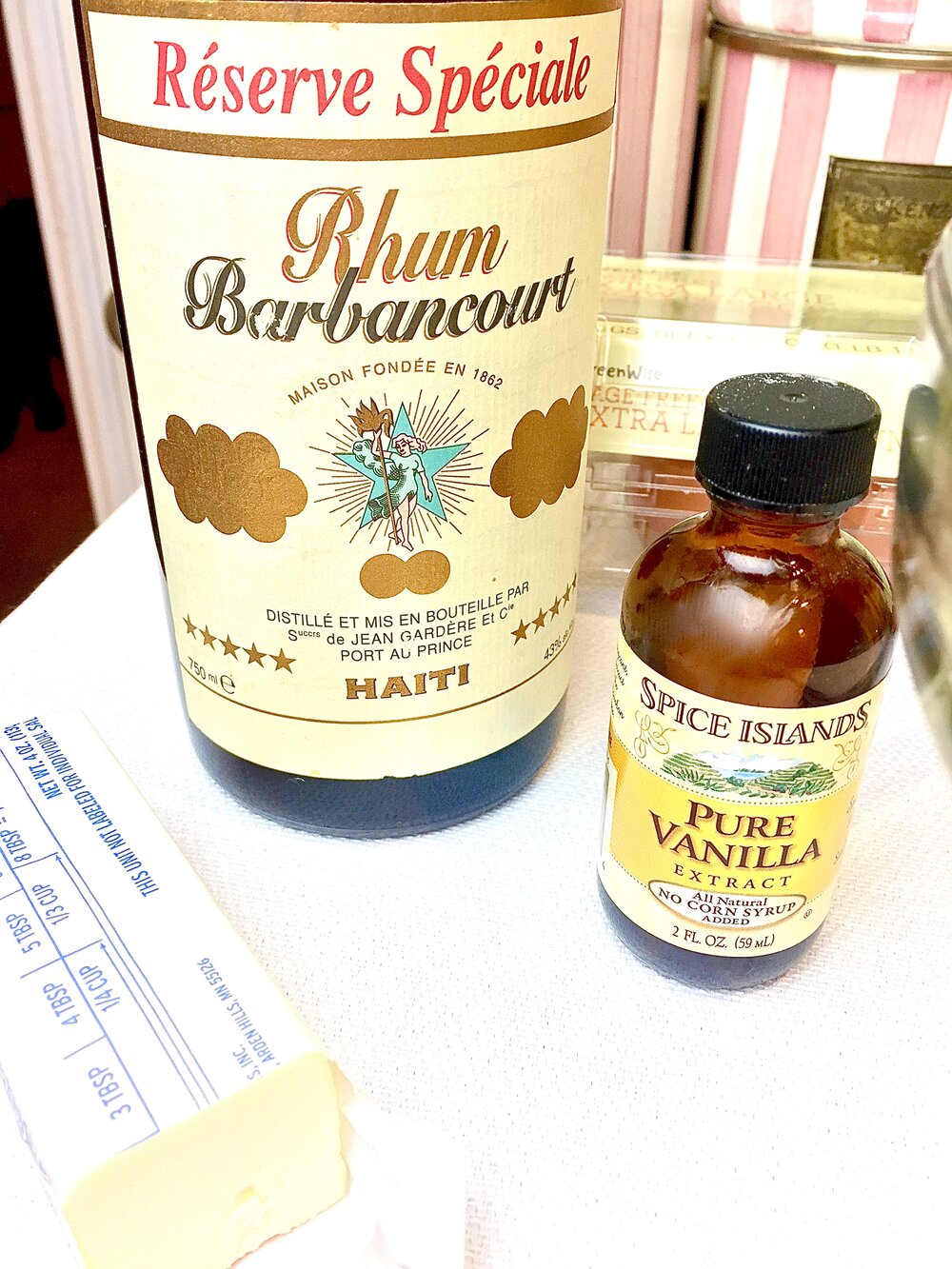
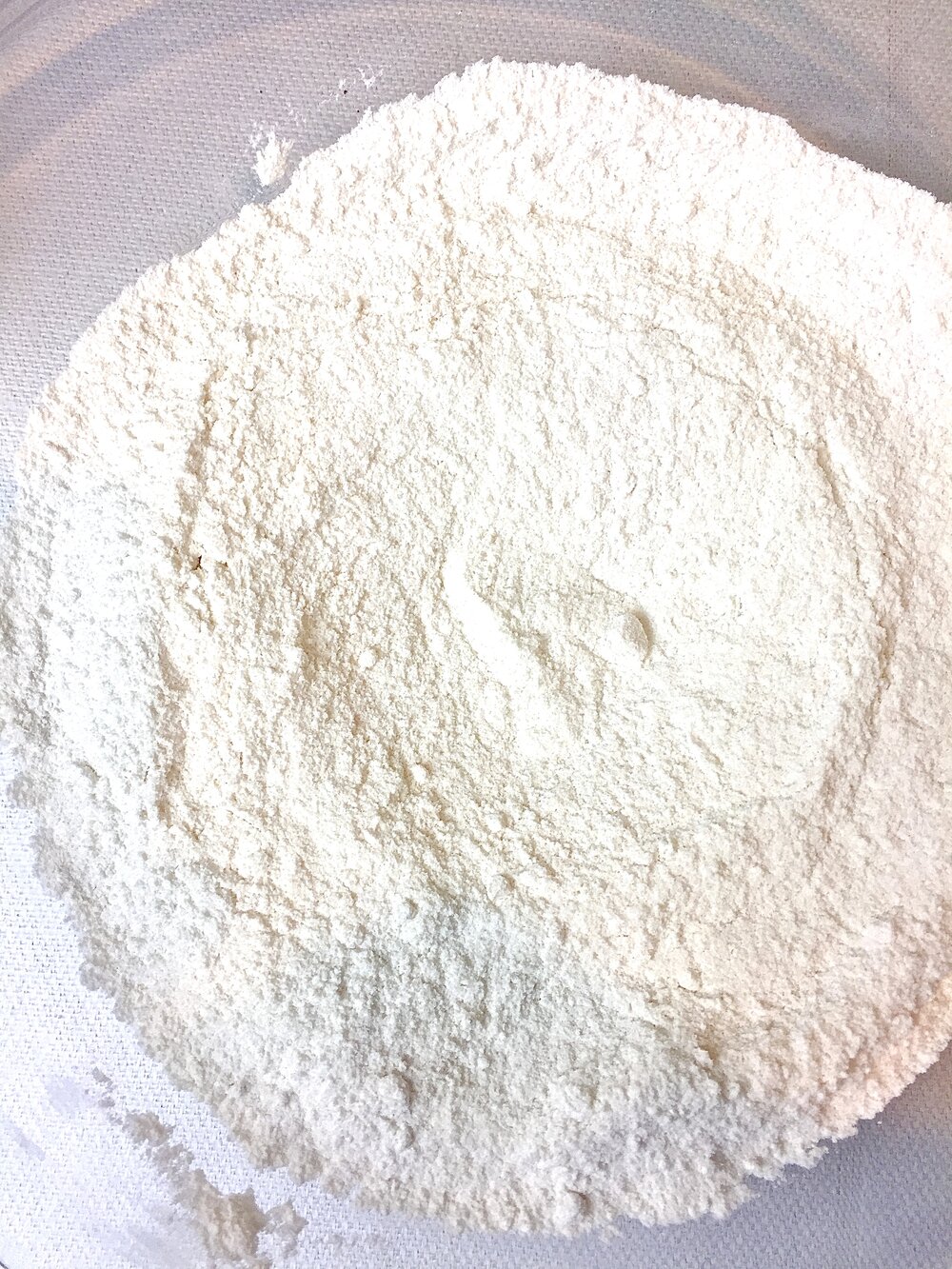
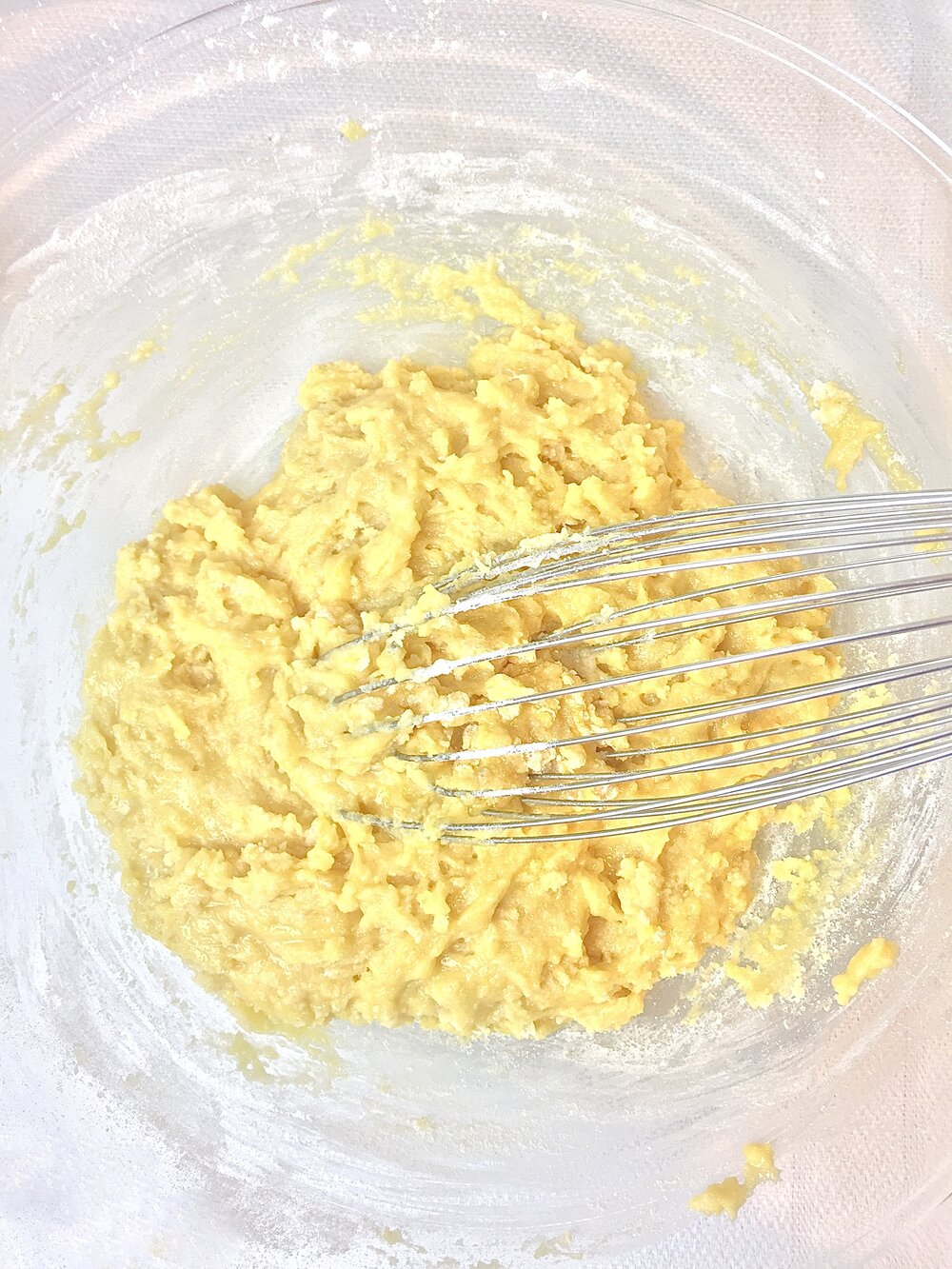
Since only the egg whites are used to "fine" the wine, the Canelé was born as a way to utilize all the leftover yolks. And personally, I can't think of a better place for them than the delightfully eggy, dense custard center of these glorious pastries!
On our first visit to Bordeaux we noticed Canelés everywhere, usually in miniature form. But this amazing recipe is for the standard size, which are bigger and allow for a better contrast between the caramelized outer crust and tender center.
Plus, there's just more Canelé to enjoy - what's not to love about that?
Now, if you're like me and not the most proficient baker, you might be a little intimidated by this recipe at first glance. I know I was, BUT I also love a challenge, especially one that leaves you with fabulous French pastries at the end. And, I'm here to tell you, Erin McDowell, food stylist and Food52 Baking Consultant, has written a brilliant recipe here. As a food blogger for almost 10 years now, I'm a stickler for a well-written recipe and this one is so well-written you actually feel like McDowell's in the kitchen with you, offering helpful advice at every step.
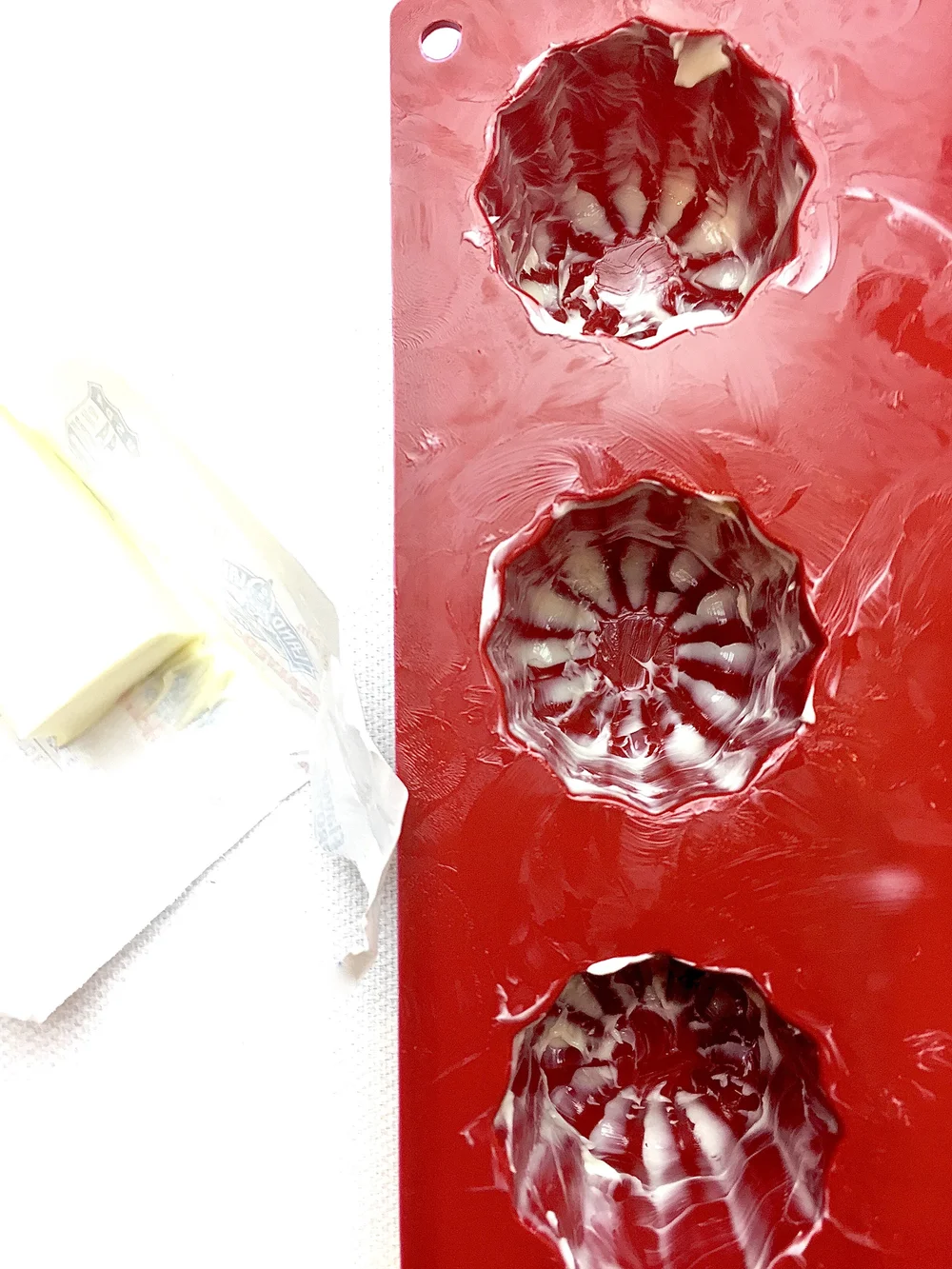
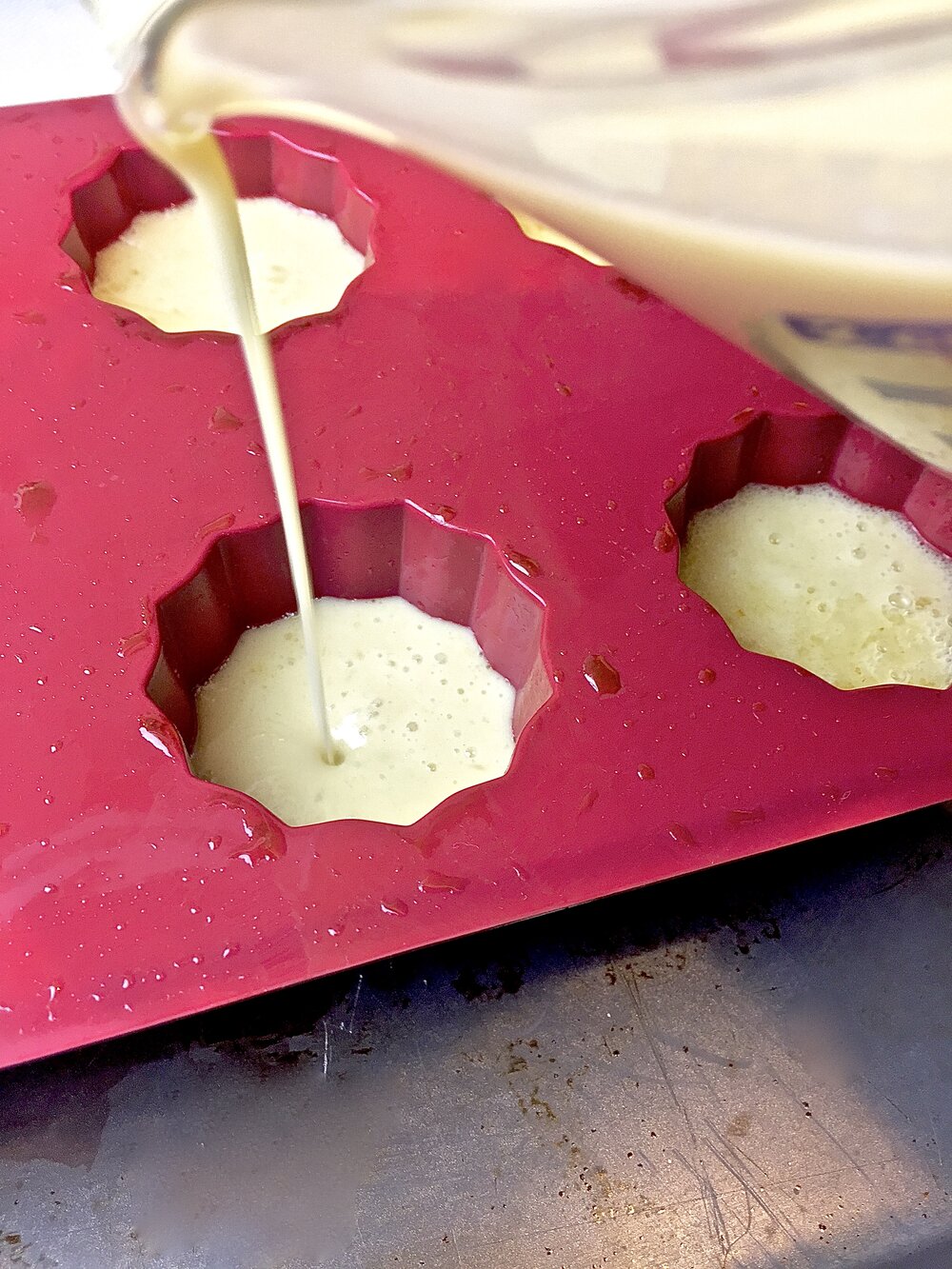
In addition to a few basic ingredients you probably already have in your pantry (i.e. eggs, flour, sugar, vanilla and butter) the only additional things you need to make this recipe are: (1) time and (2) a Canelé mold. This is the perfect weekend project since you need to let the batter rest overnight in the fridge before baking, which will also take a few hours. And, forget the elaborate and difficult to care for copper molds of the days of yore, McDowell recommends this brilliant silicone Canelé mold which can be found on Amazon for under ten dollars!
Now, the Canelés do require a little babysitting during the baking process. The mold needs to be generously buttered and pre-heated before adding the batter which aids in the caramelization process. The oven temperature also needs to be dropped after the first thirty minutes as well.
And, perhaps the ONLY thing McDowell doesn't prepare you for is the flipping of the Canelés in the mold for the final stage of baking. You might end up with some scorched fingertips but again, these beauties are so delicious you won't even notice those minor burns as you sink your teeth into these lovely confections!

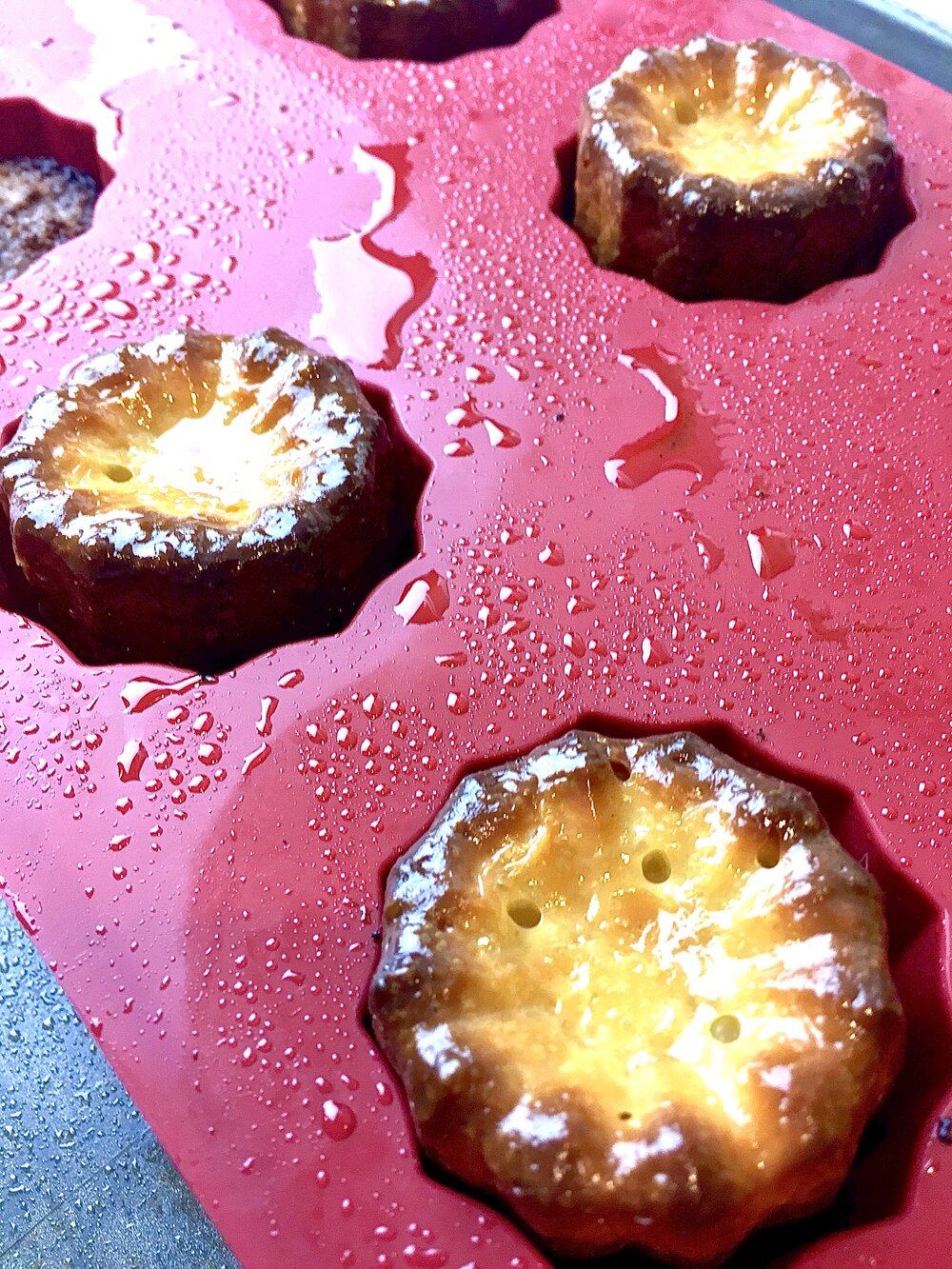
Also, if you'd like a little something to sip with your Canelés, a Sauternes would be a positively exquisite pairing. This dessert wine also hails from the Bordeaux region of France and I'm a fan of the tenet, "If it grows together, it goes together." This special wine owes its delightful honeyed citrus, floral, peach and ginger notes to a very special type of mold, botrytis cinerea, which imparts unique flavors and a delightful viscosity to the wine which would complement these pastries beautifully.
I especially like the Chateau Suduiraut Sauternes ($40/half-bottle), a delightful blend of 95% Semillon and 5% Sauvignon Blanc, the two main grapes used to make Sauternes. I also adore the Chateau Climens Barsac ($80/750mL bottle) a rare 100% Semillon wine from the Sauternes sub-region of Barsac helmed by the wonderful Bérénice Lurton. Both embody the hallmark tension between honeyed viscosity and fabulous acidity which makes these wines so incredibly special.
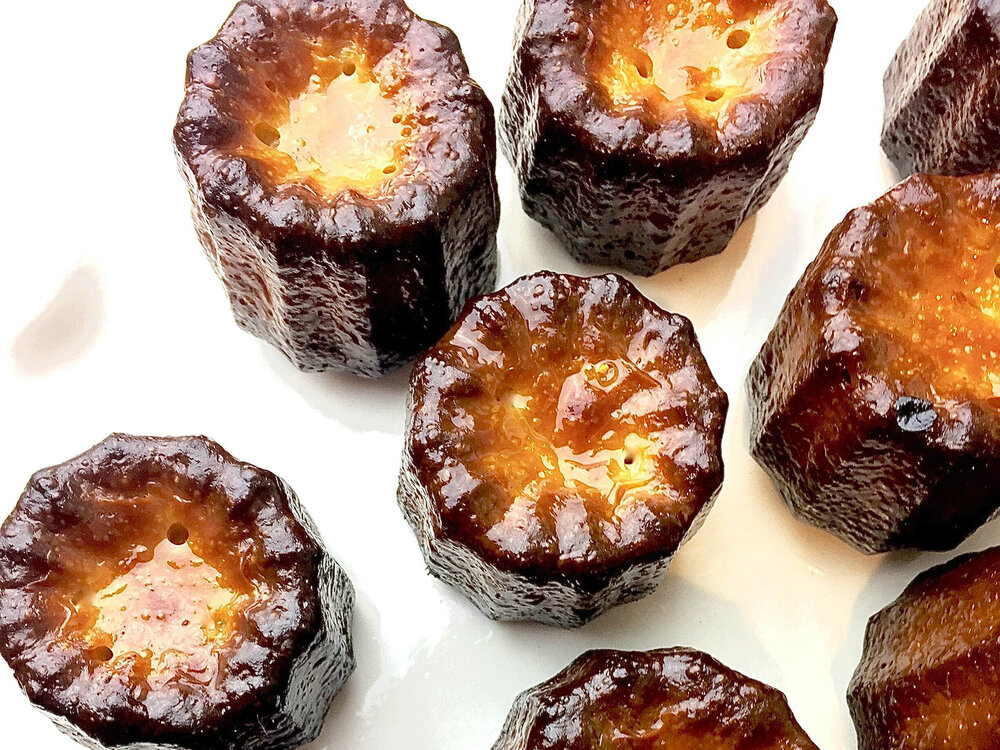

Rather than include McDowell'sCanelé recipe in this post, I'm linking to it on the Food52 website where I discovered it. I hope you enjoy it as much as we have and I'd also love to encourage any established or aspiring bakers out there to check out McDowell's brand new cookbook, The Fearless Baker ($17.50). Her website is also chock full of gorgeous food photos as well.
After experiencing such success with these Canelés, it has definitely inspired me to bake more. Plus, I can't wait to pair these sweet treats with even more amazing wines as well.
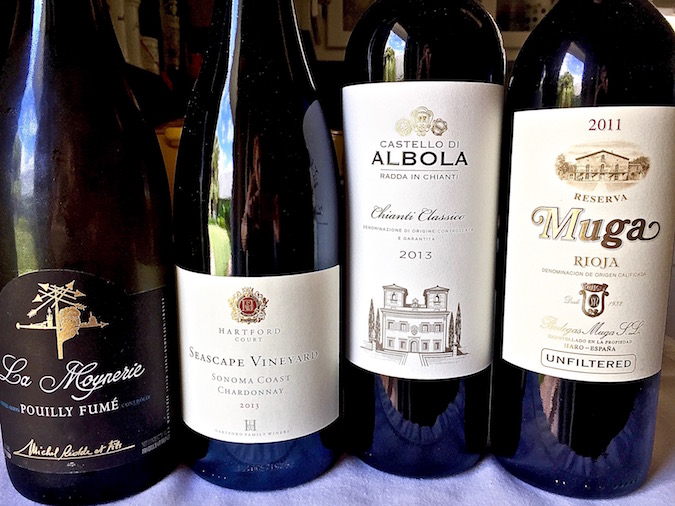
FB-LIVE-HOMAGE-TO-FROMAGE-WINE-LINEUP
This week's installment of "Wines of the Week" on Facebook LIVE, entitled an "Homage to Fromage," features four essential wine and cheesepairings guaranteed to delight your palate and inspire you to explore new ways of combining these two imminently enjoyable elements. I thought this was also the perfect topic to feature as we're officially kicking off "Entertaining Season," since pairing wine and cheese is definitely one of my favorite, no-stress means of entertaining.I mean, who wants to be slaving over a hot stove while hosting an elaborate dinner party? Why not simply set out some thoughtfully paired wines and cheeses and enjoy a delightful evening with your friends and family? You actually get to mix and mingle with your guests while watching them happily explore some truly delightful pairings.In addition to the wine and cheese, round out your offerings with some fun accoutrements such as grapes, marcona almonds, figs, honey and even red pepper jelly (it pairs especially well with Brie!) and you're sure to look like the Host or Hostess with the Mostess! I've even included some key Pairing Principles to help you create some of your own delicious personalized pairings.PAIRING PRINCIPLE #1: PAIR WINE & CHEESE WITH SIMILAR FLAVORSWine #1 - Michel Redde Pouilly-Fumé La Moynerie, Loire Valley, France, 2011 ($30): Crisp, tangy and refreshing, this single-vineyard Sauvignon Blanc from the Loire Valley demonstrates this wine's beautiful hallmark acidity and minerality.Cheese #1 - Chèvre: the tangy acidity of this fresh goat's milk cheese creates a delightful synergy as it mirrors the identical flavors found in the Pouilly-Fumé.PAIRING PRINCIPLE #2: PAIR WINE & CHEESE WITH SIMILAR WEIGHTWine #2 - Hartford Court Seascape Vineyard Sonoma Coast Chardonnay, Sonoma, California, 2013 ($70): Winemaker Jeff Stewart has transformed beautiful, exceptional fruit which hails from one of the coldest vineyards in all of Northern California into a wine of amazing complexity and elegance. On the palate, the fuller-bodied white wine coats the palate with its viscosity and exhibits layer upon layer of delicious flavor including spiced pear, apple, citrus and orange blossom with a kiss of toasty oak.Cheese Pairing #2 - Brie: This soft-ripened, bloomy rind, cow's milk cheese was dubbed the "Queen ofCheeses" at the 1815 Congress of Vienna for reason! Immensely popular even to this day, it's luxurious decadent mouthfeel makes it the perfect pairing for this opulent Chardonnay, creating a 1 + 1 = 3 experience.PAIRING PRINCIPLES #3: IF IT GROWS TOGETHER IT GOES TOGETHERWine #3 - Castello d’Albola Chianti Classico, Tuscany, Italy, 2013 ($18): This tasty red, a blend of Sangiovese with a dollop of Canaiolo, is characteristic Chianti with notes of sour cherry, pomegranate, earth and spice accompanied by the hallmark acidity that makes these wines so immensely food-friendly.Cheese #3 - Parmigiano-Reggiano: This hard, cow's milk cheese is aged for 24 months, until the moisture evaporates. This process leaves the cheese delightfully toothsome with its hallmark granular texture which perfectly complements the acid and tannin in the red wine. Food and wine which hail from the same country or region often complement each other remarkably well, making it one of my favorite pairing tenets!PAIRING PRINCIPLES #4: PAIR HARD CHEESES WITH RED WINEWine #4 - Bodegas Muga Rioja Reserva Unfiltered, Rioja, Spain, 2012 ($15): This blend of classic Spanish grapes including Tempranillo, Garnacha, Mazuelo and Graciano exhibits delightful, savory notes of cherry, plum, leather, earth and minerals.Cheese #4 - Manchego: There's something magical about the way the concentrated flavors and textures of hard cheese in which the moisture has been evaporated through extended aging, which complement similar components in red wine. And because this pairing also hails from similar geography, the grows together, goes together tenet also holds true.For ALL the details on our "Homage to Fromage," please watch the Facebook LIVE video above and to view past episodes of “Wines of the Week” on Facebook LIVE, please click here. And if YOU have any favorite wine and cheese pairings I’d LOVE to hear about the in the Comments section below!Cheers,
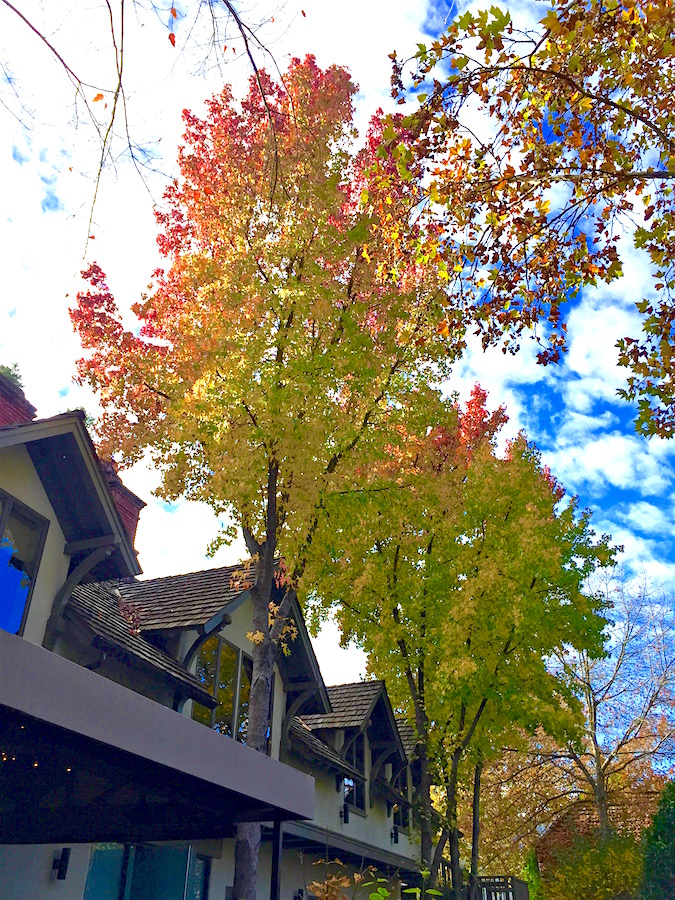
failla-syrah-estate-vineyard-golden-trees
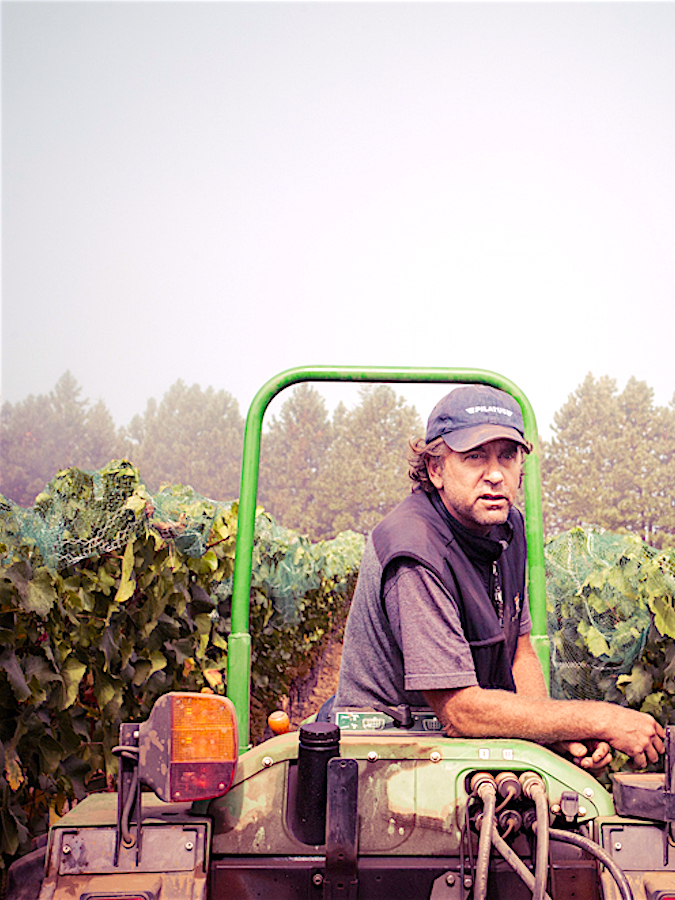
failla-syrah-estate-vineyard-ehren-jordan-tractor
I must say, California wine country is simply stunning in the Fall! During our recent visit to the legendary North Coast, which encompasses Napa and Sonoma counties among others, we encountered towering trees cloaked in their seasonal reddish, gold splendor, refreshingly chillsome evenings (we ARE from Florida after all!), as well as many amazing wines. While I look forward to sharing them with you over the coming weeks, I was especially inspired to feature one wine in particular as our latest Wine of the Week, the 2014 Failla Syrah Estate Vineyard.While Failla primarily focuses on cool climate Chardonnay and Pinot Noir, owner and winemaker EhrenJordan's eclectic winemaking experiences and sheer vinous talent allow him to work adeptly with many different grape varieties extremely well. As a fan of Syrah from the Northern Rhone, I was very impressed with his ability to craft a California wine that so closely approximates its French counterpart while allowing its terroir, and the character of the new Fort Ross-Seaview AVA, to shine through. Please read on to discover more about this very special wine that's just perfect for enjoying during the chilly Winter months.Who it's from: Winemaker Ehren Jordan and his wife Anne-Marie founded Failla in 1998 and together they specialize in sourcing cool climate fruit from the extreme coastal areas of Sonoma County. Jordan draws inspiration from his time spent in France, namely a 2-year apprenticeship in Cornas in the NorthernRhone where he specialized in Syrah, which continues to inform his winemaking style. He also held positions in California, first at Neyers Vineyards and then at Turley Wine Cellars, where he spent almost 20 years crafting world class Zinfandel. Jordan is perhaps most passionate about producing balanced, elegant, food-friendly wines that are expressive of their terroir.Where it's from: This wine hails from Failla's 14-acre Estate Vineyard located in the Fort Ross Seaview AVA, a sub-region of the vast Sonoma CoastAVA, which was officially approved in 2011. Vineyards here are situated in the steep coastal ridges above the fog line where most of the surrounding terrain is too steep to farm. Out of over 27,000 acres in the AVA, only 550 are actually usable! Only Failla and a few other esteemed vintners were willing to brave the uniquely challenging conditions including Flowers, Marcassin, Hirsch, Pahlmeyer, Martinelli, Del Dotto and Peter Michael to name a few. The region's unusually rugged terrain, high elevations, cool maritime climate and marine soils create the perfect environment for growing exceptional cool climate grape varieties.
"To me 'terroir' is distilling a place down to its essence using grapes as the medium." - Ehren Jordan

failla-syrah-estate-vineyard-rolling-fog
Originally planted in 1998, Failla's Estate Vineyard is located only a few miles from the Pacific Ocean and has been organically and dry farmed since the beginning. Jordan harvested the first grapes from the vineyard in 2001 and has increased production ever since. The special Estate Vineyard, located at approximately 1,400 ft. elevation, is currently planted to cool climate grape varieties including Chardonnay, Pinot Noir and Syrah.This Wine by the (geeky) Numbers:Primary Fermentation: Native YeastMalolactic Fermentation: NativeElevage: 11 months, aged Sur-Lie in French oak barrique, 25% newFiltration: Unfined & UnfilteredGrape variety: 100% Syrah, 20 yr. old vinesABV: 13.9%Production: 382 casesProduction notes: "Our 100% whole cluster “Estate Vineyard” Syrah was gently foot-tread, fermented with native yeasts, and basket pressed to barrel, where it competed a native ML conversion and rested on its lees until being bottled unfined and unfiltered."The Glamorous Gourmet's Tasting Note: "From its lush, purplish-red hue to enticing aromas of spiced black fruit, savory herbs and a hint of lavender, this delightful expression of California Syrah simultaneously evokes the elegance of the Northern Rhone. On the palate, this stunner reveals savory layers of blackberry, plum, licorice and black pepper while demonstrating impressive complexity and richness without seeming heavy. All components harmoniously converge on the imminently satisfying, lengthy finish."Pair it with: Rosemary & Salt crusted Prime Rib, Roasted Rack of Lamb, Pasta with Wild Boar RaguRetail Price: $58 (for purchasing information, please e-mail stephanie [at] theglamorousgourmet [dot] com or simply call 561.317.6663)Bon appétit,
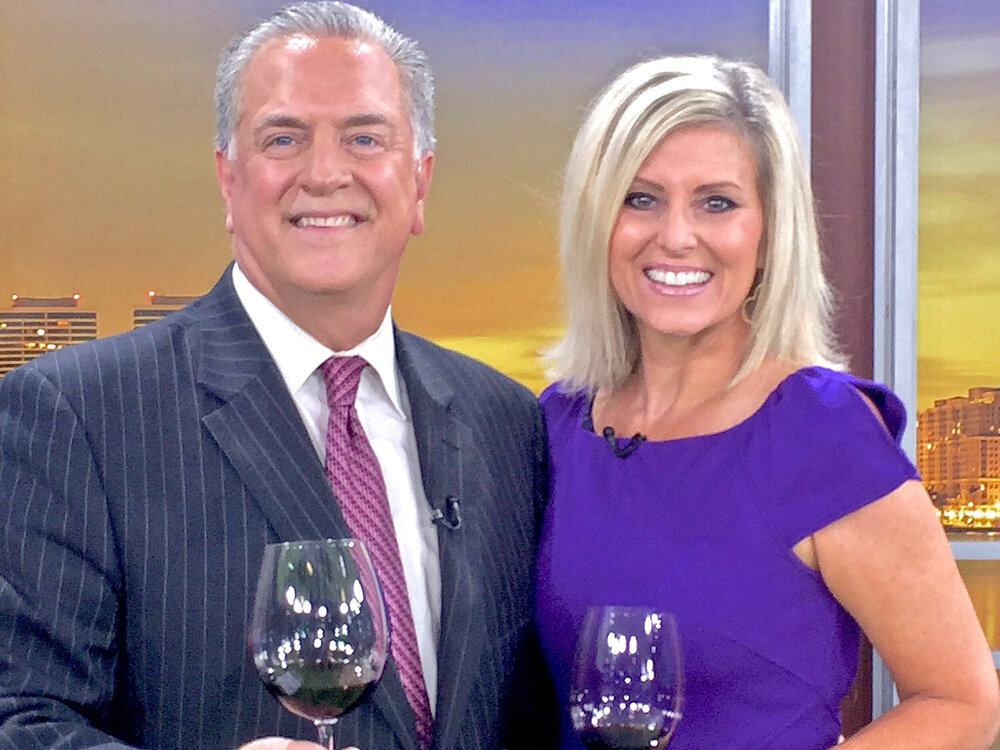
October is officially Merlot Month (aka #MerlotMe on Twitter) which celebrates the long awaited comeback of this most maligned grape variety. I was fortunate to have the opportunity to talk about this happy occasion recently with John Favole and the team at WPTV Channel 5.
While everyone likes to blame the 2004 movie Sideways for Merlot's vinous demise, Miles' rant was just the final nail in the grape's coffin at the time. The truth is, its popularity had been declining for awhile. At the height of Merlot's fame, demand was so great some growers were pulling up other, less-profitable vines in order to make room for more of it. This meant planting Merlot vines in less than optimal sites, resulting in the mass production of poor quality wine.
Unfortunately, it became more about quantity than quality.
Now, after almost a decade of vinous obscurity, it's the quality vineyards tended by the true Merlot experts that mostly remain. But what's so great about Merlot anyway and WHY are we celebrating it with Merlot Month? For those who are newbies or just need a reminder, on the likeability scale, Merlot rates pretty high!
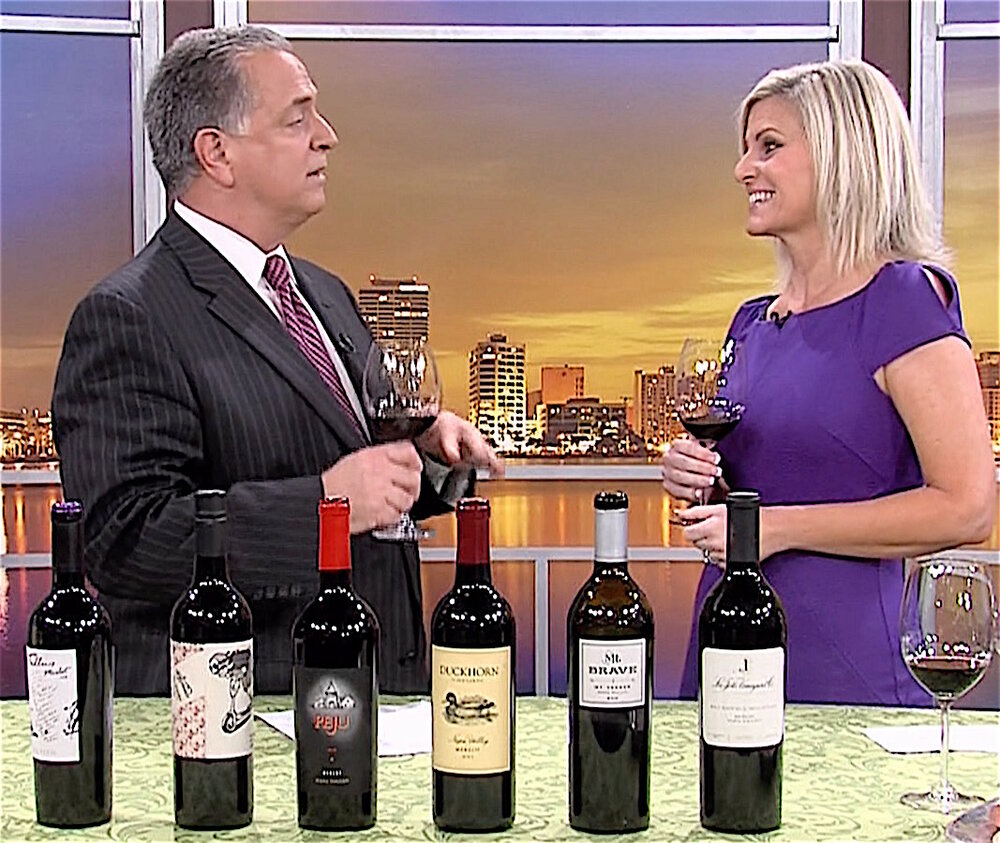
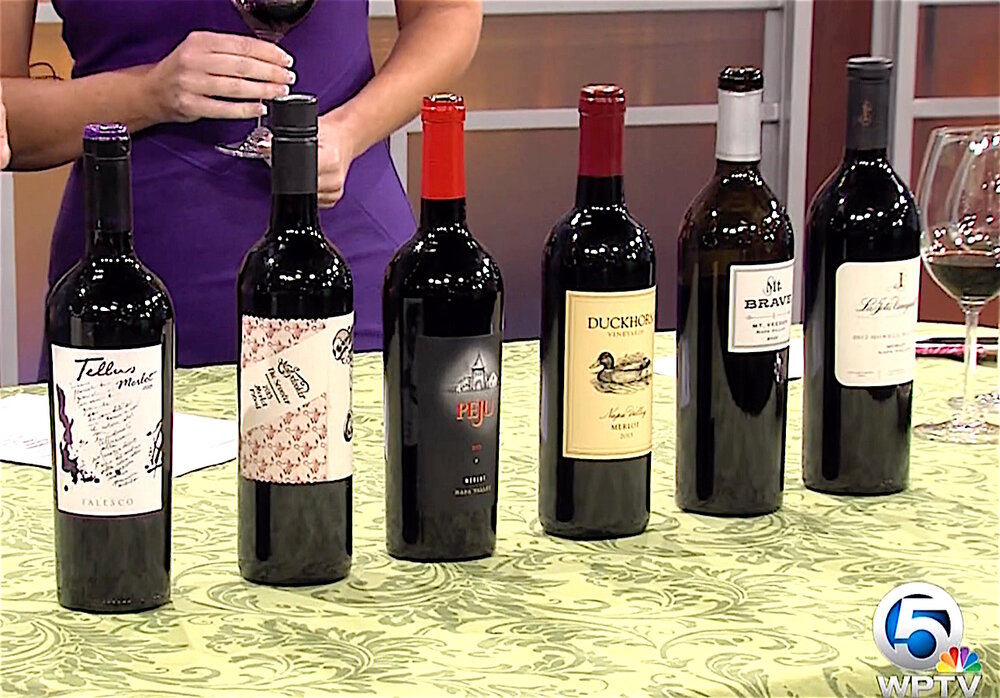
Known for its plush, lush notes of cherry, plum and chocolate and soft, supple tannins...frankly, what's NOT to like? It's inherent characteristics also make it approachable at a young age, unlike its vinous counterpoint Cabernet Sauvignon, a grape known for aggressive tannins and bold flavors that often need time in the bottle to soften. While both grapes make delicious varietal wines, the two also complement each other beautifully which is why they are often blended together.
While Merlot was officially "born" in France and is still the most widely planted grape in Bordeaux, wonderful examples of the wine can be found in many countries across the globe including Italy, Australia, Chile and the US. Each country imparts its own unique stamp on this grape which can be somewhat of a chameleon depending on where it's grown. In cooler climates, Merlot is known for exhibiting notes of black and blue fruit, minerals, licorice and herbs. Warmer climates accentuate the grape's fruitiness, highlighting cherry, candied berry, mocha, spice and soft, sweet tannins.
When it comes to food, due to its supple, fruity nature, Merlot pairs wonderfully with a variety of different dishes. Its hearty texture makes it perfect for serving with hard cheeses, cheeseburgers, stews, roasted chicken and steak. Those with a sweet tooth can also enjoy it with chocolate-based desserts that complement its lush, fruity tendencies.
I hope you enjoy #MerlotMonth and continue to enjoy this delicious grape all season long! Please check out my list of Merlot recommendations at a variety of different price points. If you'd like to watch the entire WPTV segment, or for more details on the featured wines, please scroll down for all the deets. Also, if there's a particular brand of Merlot you enjoy I'd love to hear about it in the Comments section below. Be sure to share your vinous exploits on Twitter using the hashtag #MerlotMe and check out what other wine lovers are drinking as well.
1.) Falesco Merlot Tellus, Umbria, Italy ($14): This stylish Italian gem is crafted from 100% Merlot and exhibits floral-infused aromas of lush dark fruit + spice. On the palate, mouth-filling flavors of wild strawberry, plum and spice are accompanied by delightfully grippy tannins and a lengthy finish.
2.) Mollydooker Merlot The Scooter, McLaren Vale, Australia ($25): This whimsical producer always delivers on flavor and this delightful, full-bodied Merlot is no exception! This wine is rife with aromas of black cherry and violet while on the palate, opulent notes of raspberry, strawberry and plum are accentuated by soft, supple tannins and hints of mocha and dried herbs.
3.) Peju Province Merlot, Napa Valley, CA ($45): As a longtime fan of Peju’s Cabernet Franc I was delightful to discover winemaker Sara Fowler’s Merlot years ago! This exceptional wine exhibits fragrant aromas of red fruit, spice + toasty oak while on the palate it delivers lush notes of pomegranate, cherry and blackberry are accentuated by hints of vanilla and spice.
4.) Duckhorn Merlot, Napa Valley, CA ($56): Merlot is truly the spirit grape of this world-renowned winery founded by Margaret and Dan Duckhorn in 1976. Their exceptional Napa Valley Merlot still WOWS today with alluring aromas of lush red fruit and spice followed on the palate by mouth-filling flavors of cherry, raspberry and cocoa that are accentuated by fine-grained tannins and hints of plum, blueberry and spice.
5.) Mt. Brave Merlot Mt. Veeder, Napa Valley, CA ($80): Winemaker Chris Carpenter is truly the mountain-grown Merlot whisperer, who treats each of his wines like a symphony of flavors. Happily, this stunner is no exception! Crafted from 80% Merlot and 20% Malbec grown on Mt. Veeder, this full-bodied wine displays fragrant aromas of spiced dark fruit, violets and mocha while on the palate, lush, plush flavors of ripe plum, blackberry and dark chocolate are accentuated by savory hints of black olive, earth and licorice.
6.) La Jota Merlot Howell Mountain, Napa, CA ($85): Chris Carpenter displays his talent for mountain fruit again in this truly elegant expression of Merlot from Napa’s Howell Mountain. This stunner seduces with complex aromas of dark fruit, cassis + espresso followed on the palate by opulent, layered notes of roast plum, blackberry compote and dried cherry complemented by ripe, round tannins and hints of star anise, black pepper and earth that carry through the long, lingering finish.
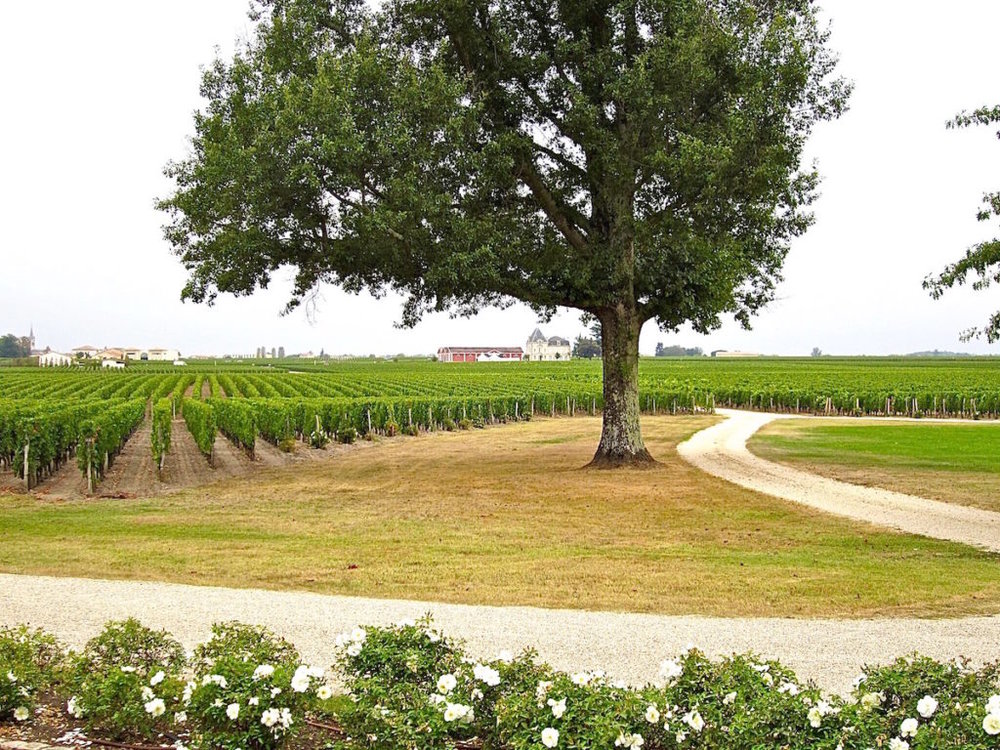
Fans of the movie Sideways, the wine-drenched 2004 film following the debaucherous adventures of friends, Jack and Miles, in California wine country, will probably recall Miles' disdain for one grape in particular...Merlot. His obvious, ahem, revulsion at the mere mention of it is really quite hilarious - click here to view but be warned, there's a smidge of profanity!
The irony in the film, however, is that Miles' most treasured bottle in his wine collection is a 1961 Château Cheval Blanc, a highly coveted, collectible bottle made of mostly...wait for it...MERLOT! Perhaps the wine's status as one of the most revered Bordeaux wines in existence made it possible for him to overcome his Merlot-phobia?
It's hard to say, but thoughts of the film had us smiling as we eased into the gravel drive of Château Cheval Blanc on a hauntingly beautiful, overcast September day.

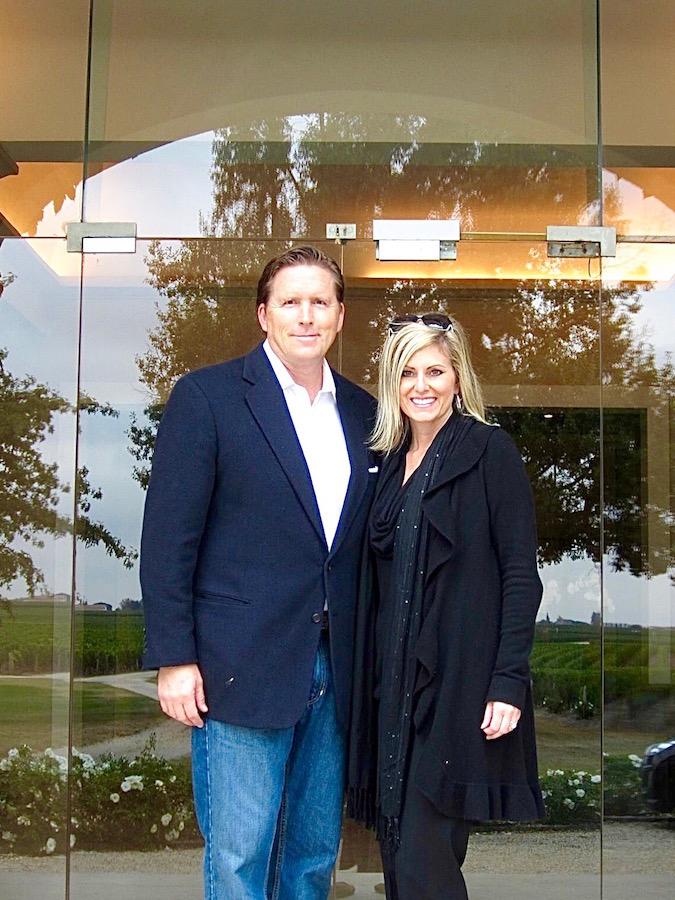
Located in rural Saint-Émilion among the lush greenery of Bordeaux's Right Bank, we were looking forward to visiting this revered estate whose terroir has been highly regarded since the 15th century. The estate currently produces two wines, the eponymous Château Cheval Blanc as well as a second wine, La Petit Cheval, which made its debut in the 1988 vintage.
In addition to its wines, the Château had also recently completed a major renovation which we were also very eager to experience. But first, a little vinous history.
Since the Saint-Émilion classification system's inception in 1954, Cheval Blanc has been categorized as a Premier Cru Classe A, the system's highest level. The Chateau shares this distinction with only three other producers: Château Ausone, Château Pavie and Château Angélus. While Cheval Blanc and Ausone have been exclusive members of this prestigious classification since the beginning, the 2012 update added Chateaux Pavie and Angélus.

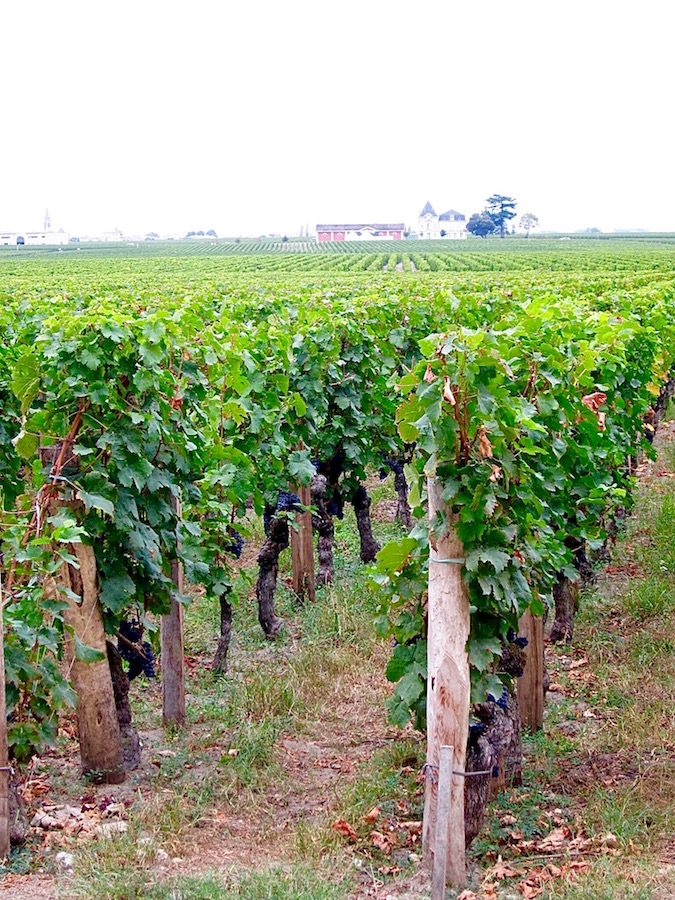
The property now known as Château Cheval Blanc, French for "white horse," was once part of a larger, 200-hectare estate known as Château Figeac. While vines have been grown here for centuries, it wasn't until Jean-Jacques Ducasse purchased a portion of the estate in 1832, that the core of what many would consider the finest Chateau in all of Bordeaux was formed. Over the next 20 years, the family continued to add land to estate until it reached 39 hectares which is where it still stands today.
When Jean-Jacques' daughter Henriette married Jean Laussac-Fourcaud, a Libourne wine merchant, a new chapter in the evolution of Château Cheval Blanc began. In the 1860's, Laussac-Fourcaud's keen intuition led him to replant the vineyards to half Merlot and half Cabernet Franc, the two grapes which, to this day, thrive on Bordeaux's Right Bank.
He also realized the importance of water stress in order to produce the finest grapes possible. Formerly known as vin de Figeac, the wine was first sold under the Cheval Blanc name in 1852.
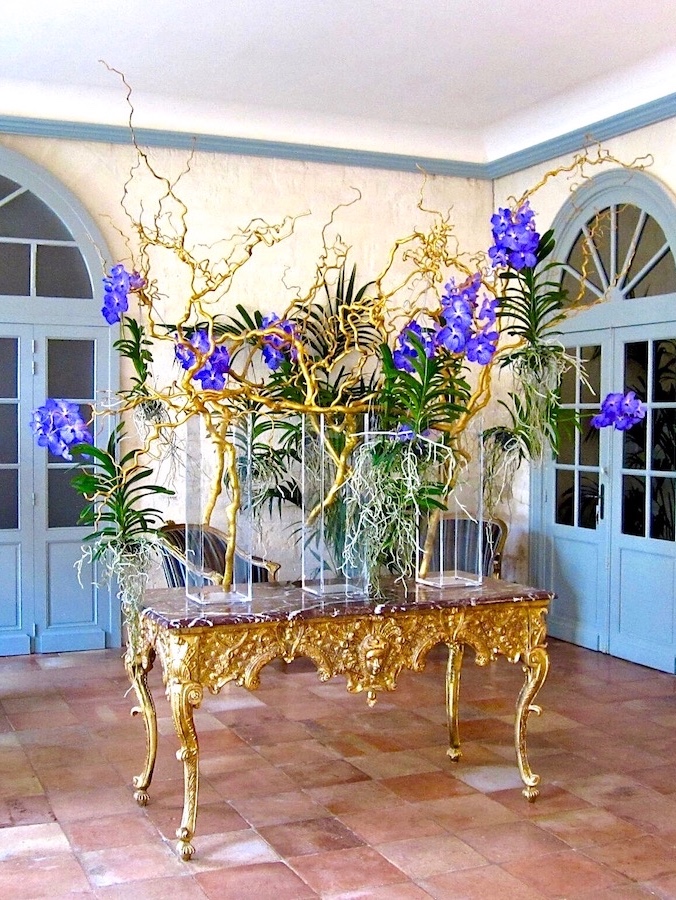
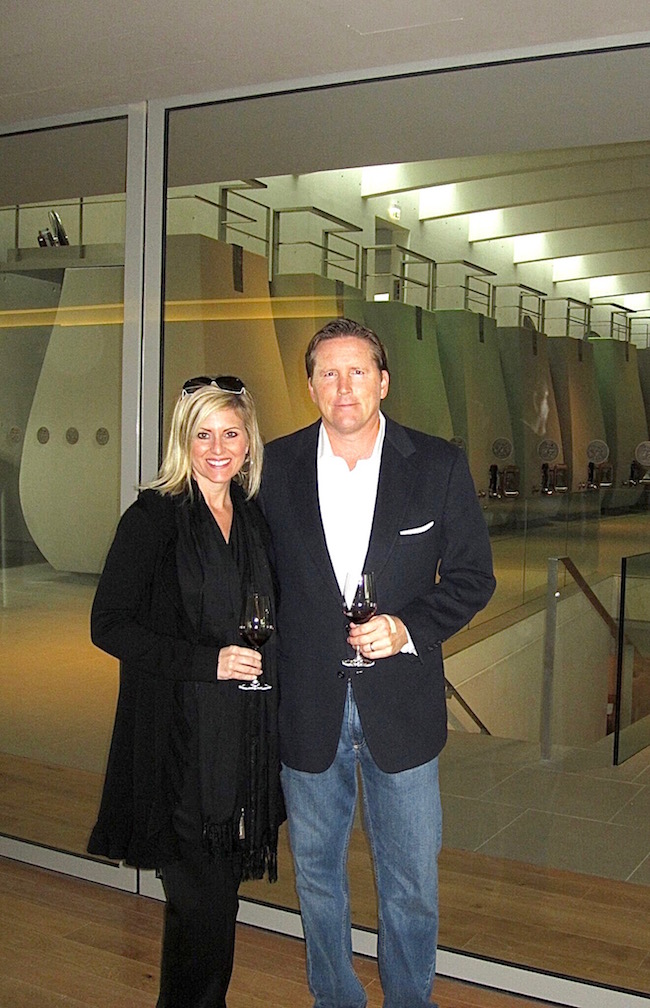
For thirty years, Jean Laussac-Fourcaud dedicated himself to one thing only, making the wines of Château Cheval Blanc the best in Saint-Émilion! His hard work paid off and his wines won many awards over the years and developed a reputation of excellence.
In the 1880's Cheval Blanc was even considered on par with the finest wines of the Médoc, garnering similar prices as wines from the famed Chateaux Margaux, Latour, Lafite and Haut-Brion. Once Jean Laussac-Fourcaud passed away, his son Albert inherited the Chateau and perpetuated the work of his father and made even more improvements in the vineyard. By the time Albert's two sons, Jacques and Joseph, inherited the estate, they too followed in the footsteps of their father and grandfather before them.
Over the ensuing decades, acknowledgements of excellence continued to solidify the family's legacy including the aforementioned appointment in the Saint-Emilion Classification system as Premier Grand Cru Classé "A." This exalted rank was perpetuated in each following classification update and Cheval Blanc became a member of the exclusive "Club of 9" comprising the first growths of Bordeaux. Perhaps cellarmaster of Cheval Blanc for 44 years, Gaston Vaissière, summed it up best when he deemed the vineyards' terroir "magical."
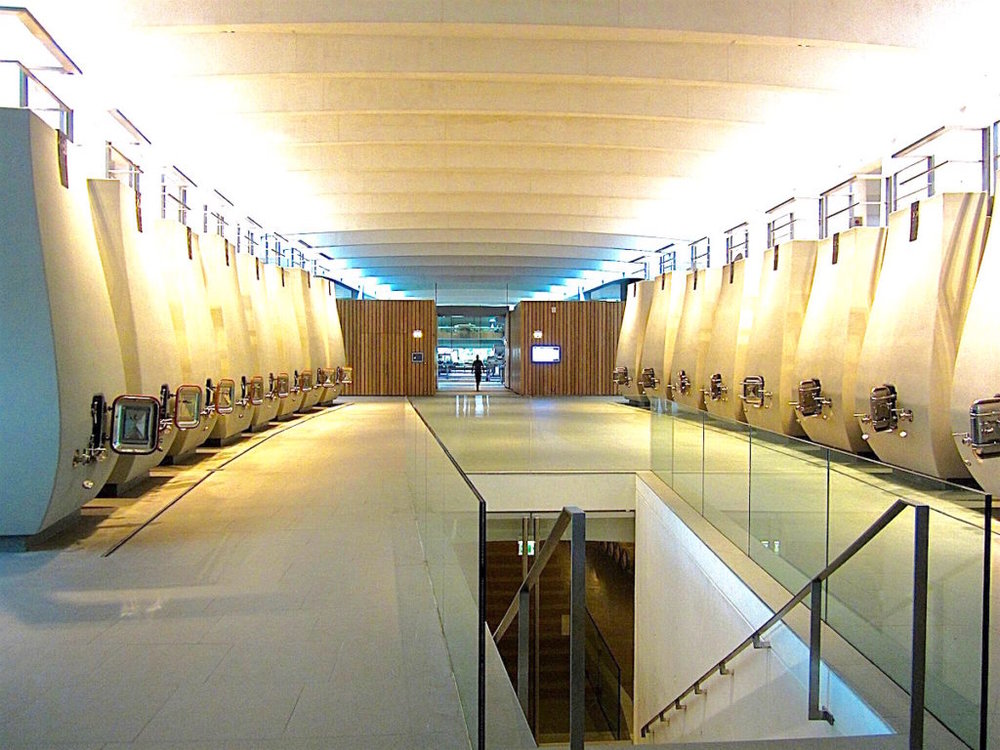
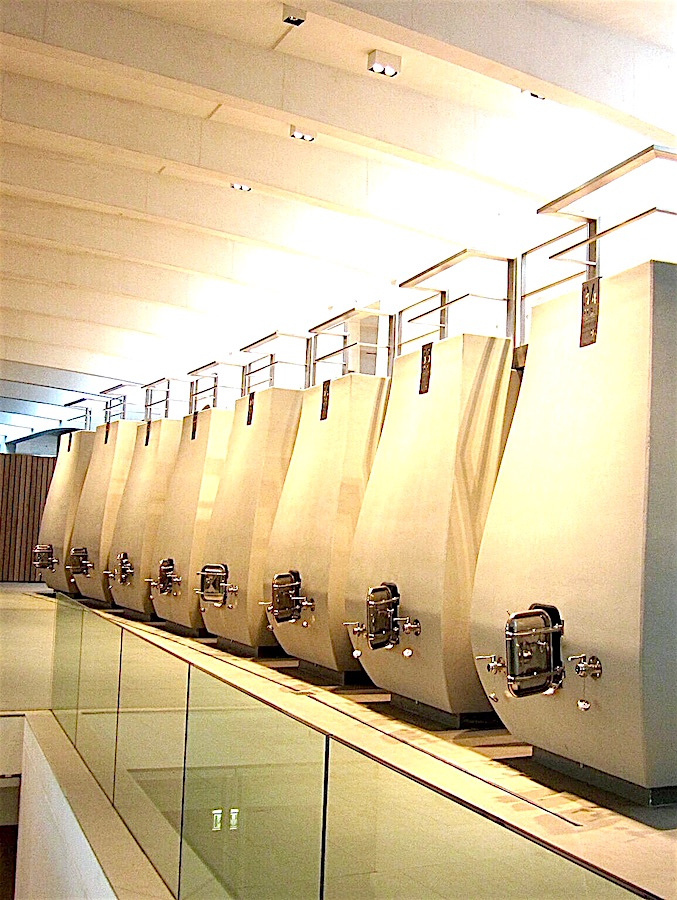
The priority today continues to be producing wines of the utmost quality, which calls for enormous attention to detail and winemaking precision.
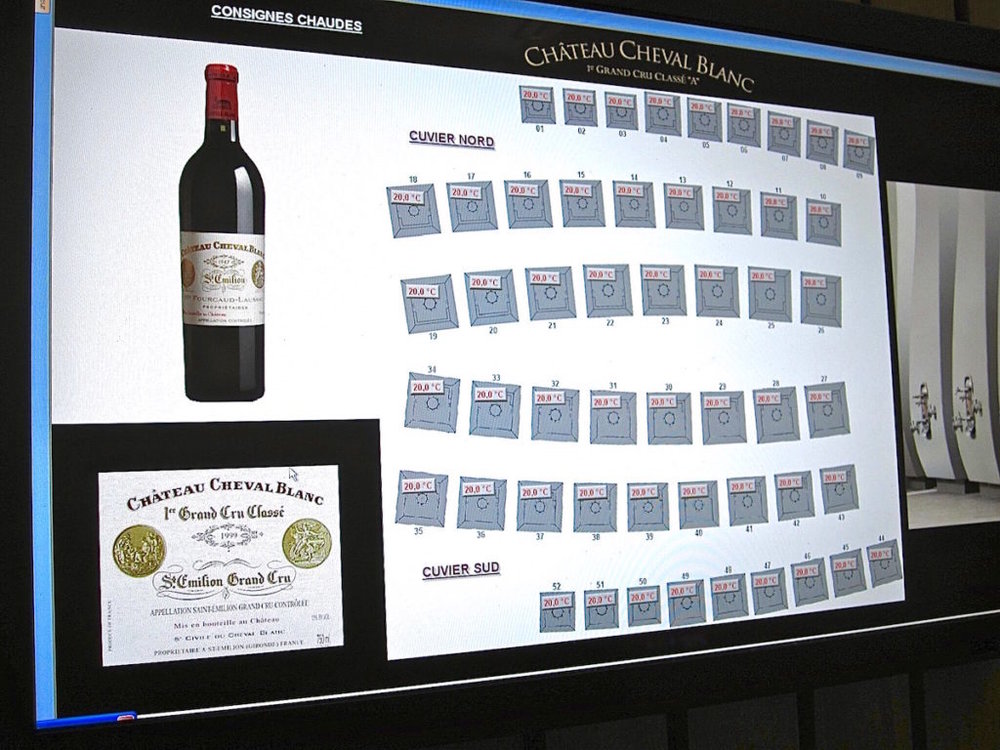
Another important chapter of the Cheval Blanc story commenced in the Autumn of 1998 when Bernard Arnault and Baron Albert Frère, old friends and lovers of great wine, joined forces to purchase the fabled château.
They brought on Pierre Lurton as Estate Manager and injected a dynamic new spirit into the Château while maintaining the utmost reverence and respect for its history. They also placed their complete trust in the winemaking team to continue their wonderful work. The priority today continues to be producing wines of the utmost quality, which calls for enormous attention to detail and winemaking precision.
With a vision towards the future, the duo embarked on the addition of a new, state-of-the-art cellar adjacent to the Château. The impressively modern structure was designed by Christian de Portzamparc, winner of the Pritzker Architecture Prize in 1994, and was completed in June 2011. Reflecting the taste of the Château owners, the addition is both futuristic and in keeping with the surrounding historic vineyard landscape which is listed as a World Heritage Site by UNESCO.
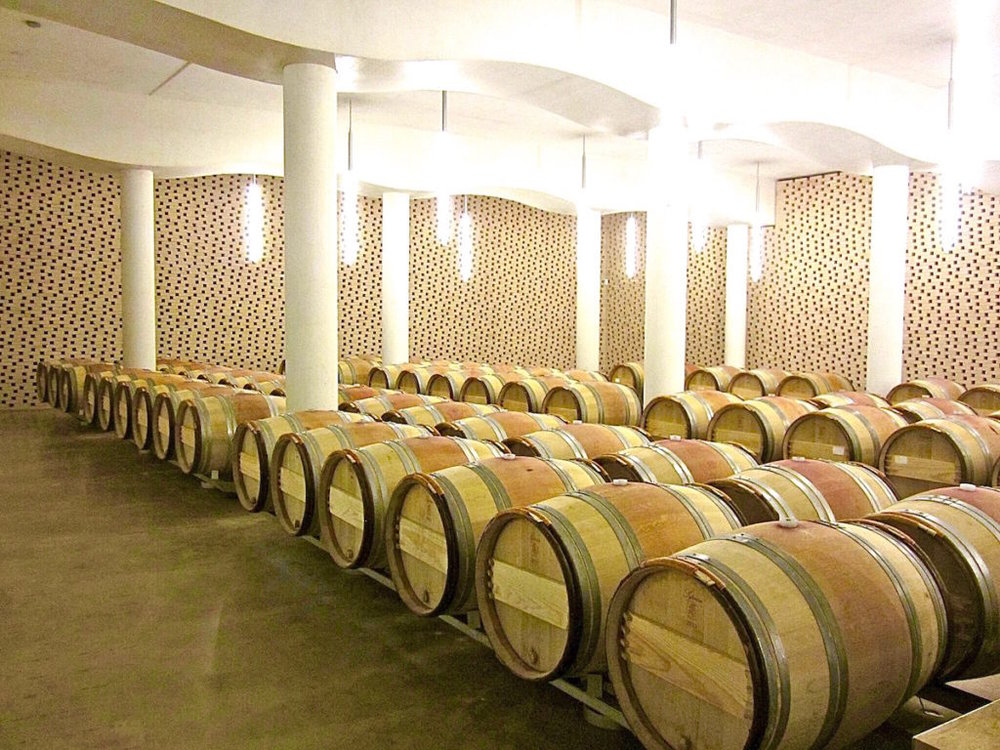
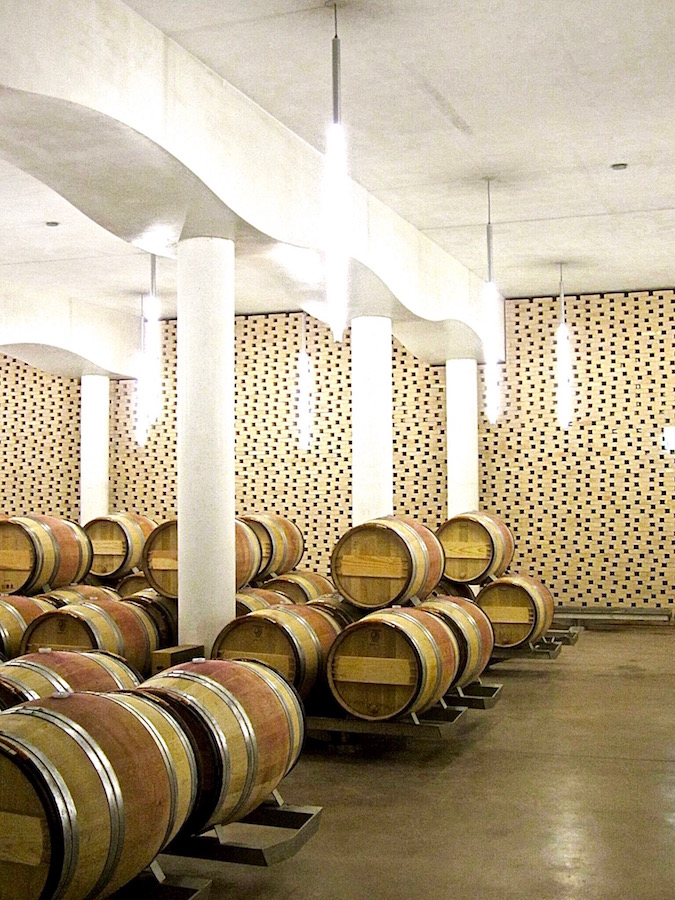
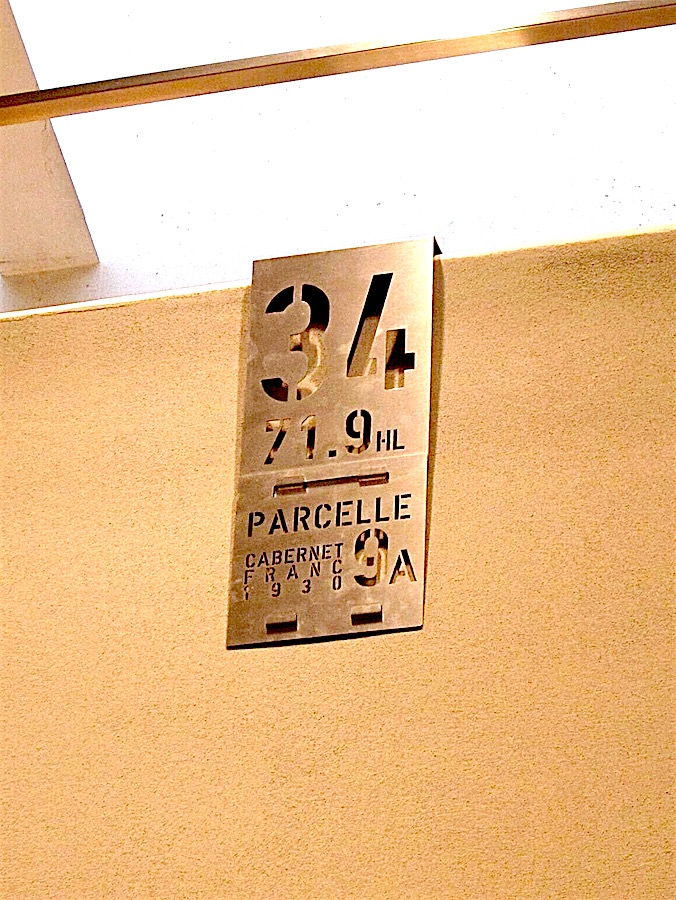
The new Cheval Blanc cellar was extremely well-received and the first structure in its category to be certified for the High Quality Environmental (HQE) standard. With its uber-stringent criteria, this certification recognizes great care taken in choosing building materials, energy conservation, waste water management as well as acoustic comfort and employee well-being.
On our tour of the new facility, we felt like we were walking on truly hallowed ground. The new cellar's intimate yet airy feel exuded elegance with its monochromatic colors and diffused natural light. One of the most striking interior vistas features six rows of curvilinear Italian concrete vats stoically flanking a walkway and stairwell down to the barrel room.
The number of vats correlates exactly with the Chateau's fifty two vineyard plots, allowing each one to be vinified separately, a very important component in the production of the Cheval Blanc wines. Each bespoke vat is individually tailored to the size of its assigned vineyard plot and labelled with its corresponding plot number, grape variety and the number of hectoliters the plot produces. The temperature of each vat is also individually controlled and monitored by a super sophisticated control panel. The integration of tech-savvy features and sophisticated aesthetics in this impressive structure was truly amazing!
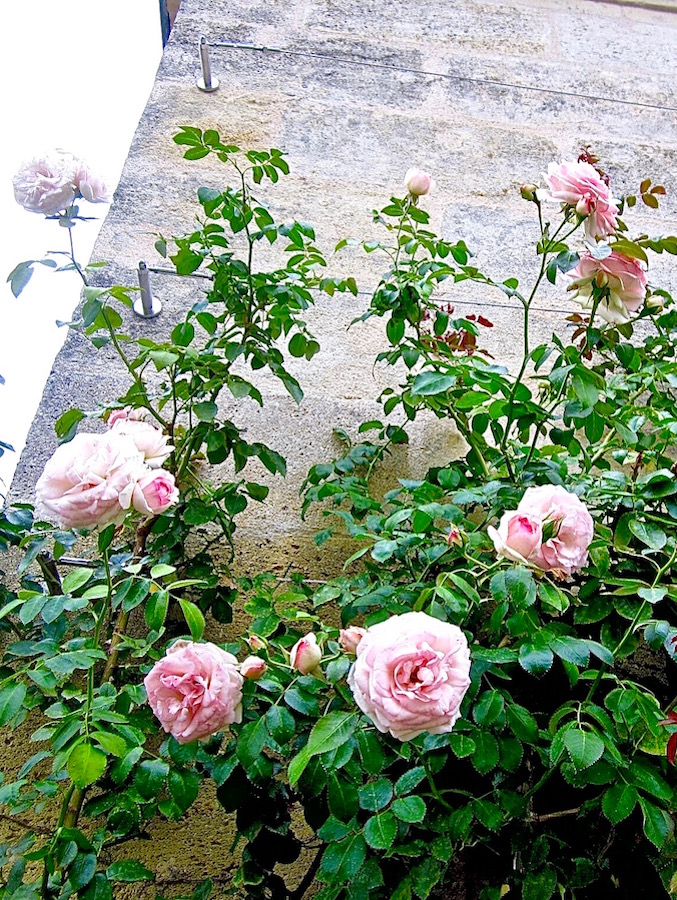

One level below the tank room was the extensive underground barrel cellar where French barriques cradled the aging wine. The artfully displayed barrels were illuminated by the soft glow of stylish, low-hanging pendant lighting. The cellar's beautiful Mashrabiya walls, inspired by traditional Arabic wooden screens, served the dual purpose of concealing machinery and equipment while facilitating ventilation. Standing amidst the barrels, the intimate, elegant space felt more like a chic hotel lobby than what you'd expect to find in a musty wine cellar.
After we toured the cellar's interior we were led up to the rooftop which featured beautiful gardens and panoramic views of the bucolic splendor surrounding the estate. The view also included the vineyards of another world renowned estate, Chateau Pétrus, which is only a stone's throw away in neighboring Pomerol. While the prestigious Chateaux and vast holdings of the Left Bank are certainly very impressive, we were truly smitten with the verdant lush greenery and relaxed charm of the Right Bank.
Finally, we toured the estate's vineyards and were able to walk among its revered vines. As we meandered down the gravel paths we were able to pluck some of the Cabernet Franc grapes straight from the vine. Since it was September just before harvest, the grapes were juicy and perfectly ripe. After we had each sampled a few of the delightful jewels, we were ushered away from the vineyard in order to avoid cutting into their profits!
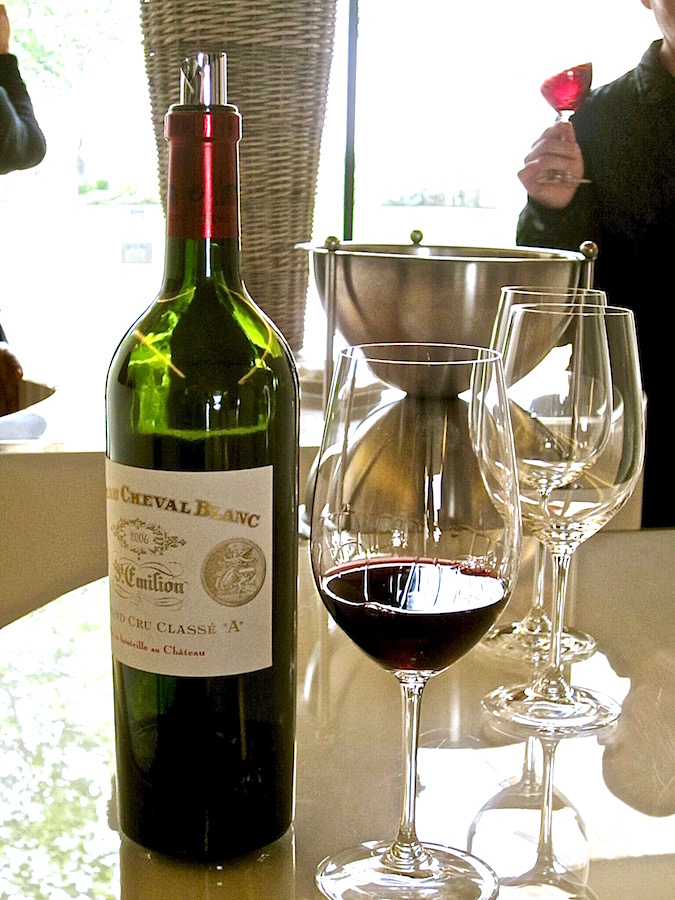
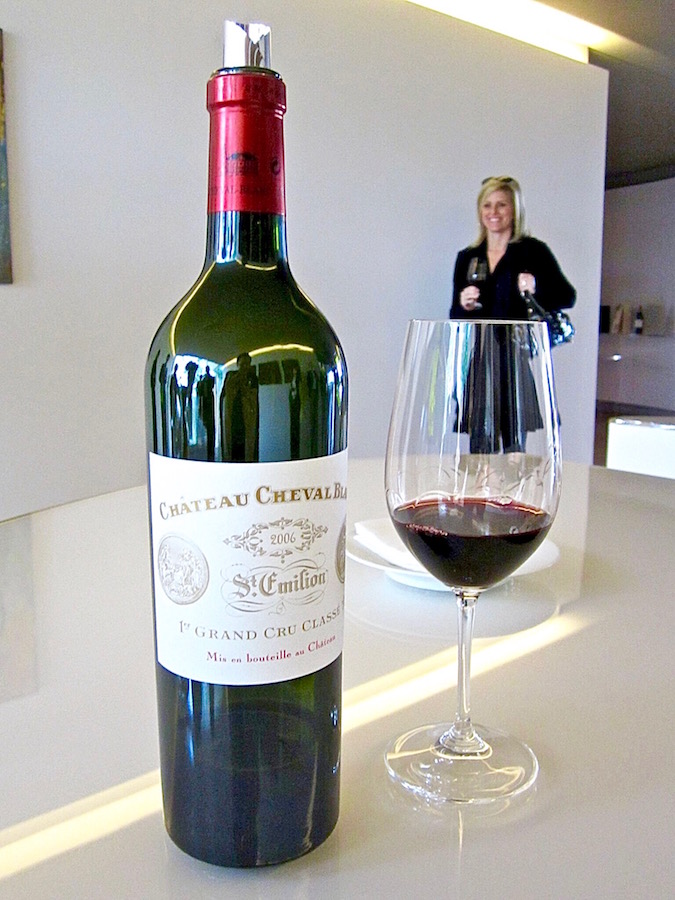
Understandably, the soil types the vines are grown in is particularly important for maintaining the character of the Cheval Blanc wines. While some estates in Saint-Emilion have excellent gravelly soil, and others have very good clay soils, Cheval Blanc is blessed with both types of soil in fairly equal proportions. Château Cheval Blanc is also one of the rare estates whose vineyard configuration has remained practically identical for nearly a century and a half, since 1871. This continuity can also to be found in the proportion of grape varieties. In 1911, the share of Cabernet Franc was also close to 50% just like it is now.
The vineyards at Château Cheval Blanc are planted to three classic Bordeaux grape varieties: 49% Cabernet Franc, 47% Merlot and 4%Cabernet Sauvignon. The average age of the vines is 42 years, but the oldest plots go back to 1920.
Replanting is done at a very slow rate – only one hectare every three years. This means that, year in and year out, the heart of Cheval Blanc's vineyard remains intact. Each vineyard plot has its own specific profile due to the age of the vines, surface area, kind of soil, type of rootstock and grape variety. As a result, the wine produced from each plot has its own unique profile. Those from clay soil are powerful with velvety tannin, while those from gravel soil are more aromatic and elegant. A blend of the two results in a wine that is both powerful and elegant with expressive aromatics as well as the complexity of Bordeaux's greatest wines.
After our fabulous tour of Château ChevalBlanc we sampled the Chateau's 2006 vintage, a blend of 54% Merlot, 45% Cabernet Franc and 1% Cabernet Sauvignon. 2006 was a year which highly favored Merlot, resulting in a wine with rich, ripe, expressive fruit which melded beautifully with the elegance of the Cabernet Franc.
The full-bodied wine was rife with layered notes of violet, cassis, cocoa, leather and cigar box which continued to evolve and mesmerize in the glass. The wine's opulence was balanced by its elegant frame and fine tannins, which demonstrated remarkable balance and poise. We took our glasses up to the rooftop garden to fully savor and indulge in the experience...right down to the very last drop.
Are you a Bordeaux fan? Why or why not and if you are, which bank do YOU prefer, Right or Left? Please let me know in the Comments section below.
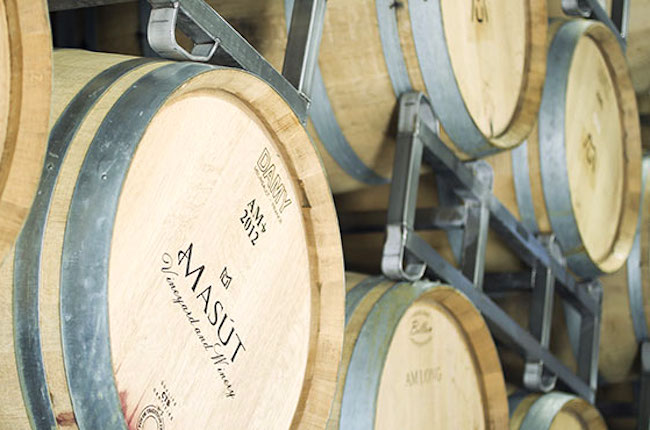
masut-pinot-noir-barrels-2
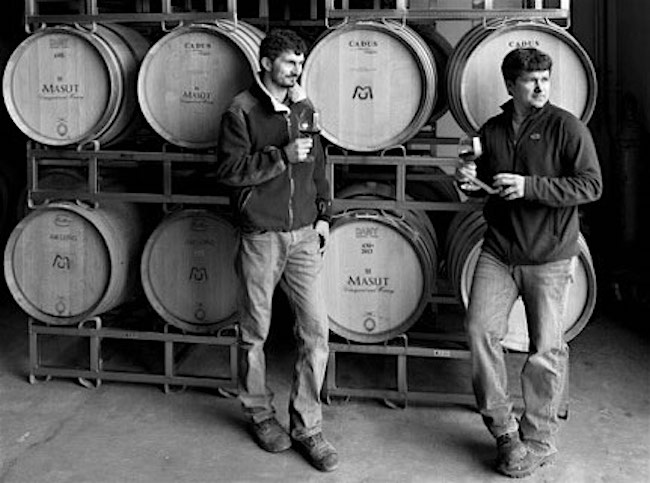
masut-pinot-noir-fetzer-bros-bw-2
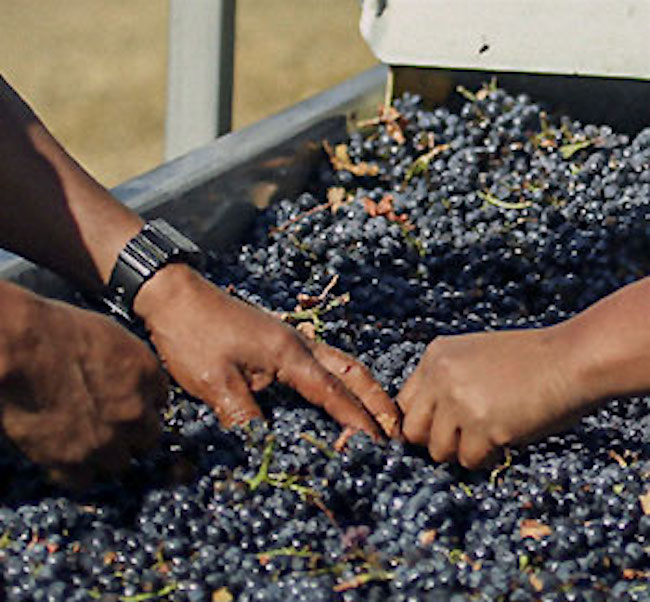
side1_color
With our thoughts turning to all the delights of Fall, pumpkin spice lattes, butternut squash bisque and cozy cashmere sweaters (*swoon*), it is with great pleasure that I introduce our latest #WineWednesday Wine of the Week: the 2014 Masút Pinot Noir Eagle Peak Estate Vineyard from Mendocino, California.Pinot Noir is undoubtedly the patron red grape of Fall. Its lighter body and savory, earthy fruit flavors provide a nice transition from the light whites and rosés of Summer. It also pairs incredibly well with many of your favorite Fall dishes - more on that later! While Burgundy, France is the birthplace of this revered grape, many of you may also be smitten with the plethora of delicious CaliforniaPinot Noir options available. If so, I think you will enjoy this delightful incarnation from Mendocino, located approximately 3 hours from San Francisco and about as far north in California wine country as you can get.The 2014 Masút Pinot Noir hails from the estate vineyards of a well known winemaking family and offers oodles of Pinot Noir deliciousness including black and red cherry fruit flavors, a delightful earthiness and satisfying, food-friendly acidity which make it a fabulous companion at the table. Please read on for all the deets and I hope you enjoy this week's selection. Also, feel free to share it on Twitter (don't forget to add #WineWednesday) or save to your fave Pinterest board using the tags located in the upper left corner of each photo!Who it's from: The MasútWinery was founded in 2009 by Jake and Ben Fetzer, sons of the late Bobby Fetzer, one of Medocino's best known winemakers. The brothers grew up in the vineyards of Mendocino following in their father's footsteps. In 1994, Fetzer purchased a 1200 acre property in Mendocino and named it Masút, a Native American word meaning “dark, rich earth.” He was intrigued with the hillside site of fast draining soil, desirable sun exposure and marine influenced winds and his goal was to grow the finest Pinot Noir possible. Unfortunately, in 2006 Fetzer passed suddenly in a tragic rafting accident. Despite his untimely passing, the brothers forged onward in memory of their father to produce their "small batch" MasútPinot Noir which debuted in 2011.Where it's from: Eagle Peak is located in the coastal mountains of Mendocino County. In October of 2014, the location was recognized as its own American Viticultural Area as Eagle Peak, Mendocino County. It is comprised of 26,260 acres which are marked by coastal afternoon breezes, elevations ranging from 800-3,000 feet and a cornucopia of microclimates. The Eagle Peak AVA also has substantial diurnal shifts, the variation between high and low temperatures occurring in a specific location during the same day, which are essential for producing prime Pinot Noir. It's thin, well-drained soils are also ideal for growing the finicky Pinot Noir grape. These conditions allow the Fetzers to grow truly expressive and unique Pinot Noir grapes.Wine by the (Geeky) Numbers:Vineyard Blocks - 6, 7, 12, 13, 14Pinot Noir clones - 115(50%), 23(33%), 777(17%)Rootstock - 101-14MG, 44-53MYields - 2.9 tons/acreHarvest Dates - Sept 4th-10thCooperage - French Oak (50% new)Aging - 15 months Sur lie (click here for more info)Bottling - Unfiltered (click here for more info)Production - 1,800 casesThe Glamorous Gourmet's Tasting Note: This medium-bodied, garnet red wine displays fragrant aromas of black and red fruit and earth. On the palate, flavors of raspberry pastille, spiced cherry and dusty earth accompany a bright, food friendly acidity. Youthful, chewy tannins are well balanced and follow through on the lengthy, mineral-tinged finish.Pair it with: This delightful Pinot is incredibly versatile at the table and will pair beautifully with many of your Fall favorites such as succulent roast chicken and hearty soups and stews. Here on the blog, I highly recommend pairing this wine with some of our favorite recipes including: Quick Coq au Vin, Rosemary Roasted Chicken with Mushrooms & Caramelized Onions and Roasted Chicken, Sage, Mushroom & Caramelized Onion Salad.MSRP: $45 (for purchasing information, please e-mail stephanie@theglamorousgourmet or call 561.317.6663)Cheers,
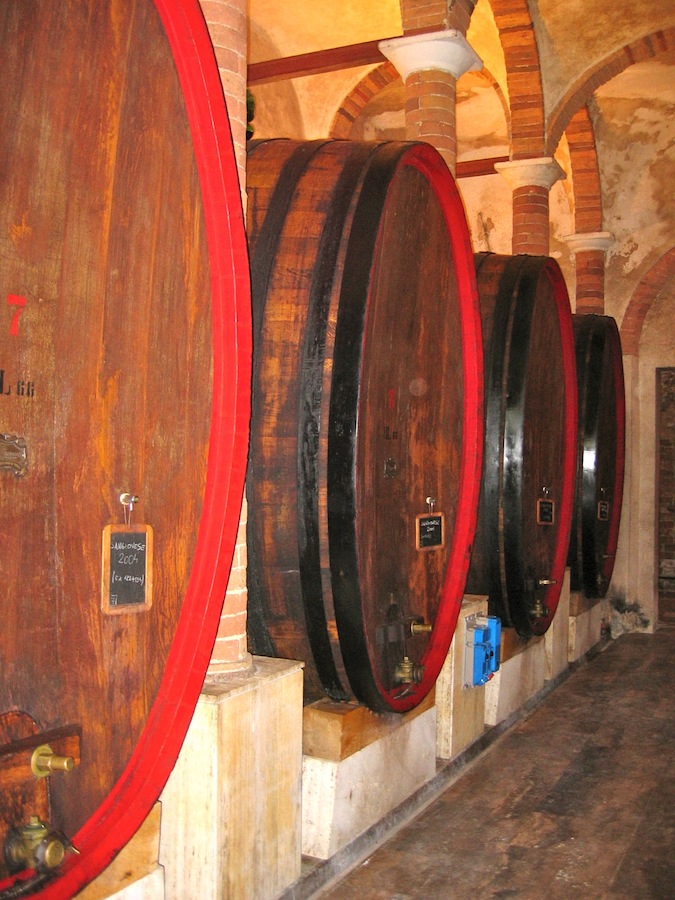
fattoria-felsina-botti-cellar
Whether you're eager to learn more about wine or are just a casual imbiber, sooner or later you're going to encounter our latest Wine Word(s) of the Week: "Old World" & "New World." Knowing both the geographic meaning of these terms as well as the stylistic differences they imply will help you develop your own personal vinous tastes and discover wines that are most likely to please your palate.
Geographically speaking, the term Old World refers to the countries of Europe where winemaking essentially originated. Countries such as France, Italy, Spain, Germany and Portugal, among others, that've been making wine for hundreds and hundreds of years fall squarely under the Old World umbrella.
New World wine regions, on the other hand, are anything outside Europe. Fine winemaking in these regions only developed after the introduction of traditional Old World techniques and Vitis vinifera grape varieties (to learn more, click here). Countries such as the United States, Australia, New Zealand, Chile, Argentina, South Africa and, more recently, China are all considered New World wine regions.
In addition to the geographic distinction, the terms Old World and New World also refer to the style of wine they produce. Old World wines are considered more restrained and understated in terms of aroma, flavor, body and alcohol content relative to New World wines. This is partly because Old World wine regions have cooler climates which prevent the grapes from getting as ripe as they do in the New World. Riper grapes have more sugar which results in higher alcohol levels and fuller-bodied wines. Aromas and flavors of fruit are also more intense in wine made from riper fruit.
So while Old World wines are generally more earthy with reserved aromas and flavors, New World wines are more fruit forward with more intense aromas and flavors.
It is important to note that both styles of wine can be balanced and delicious and neither Old World nor New World wines are "better" than the other despite what you might hear from some wine snobs out there. It's important to do your own vinous research and taste as many wines as you can (how's THAT for homework?) and let your own palate be your guide.
Using the Wine Word(s) in a sentence:
"I prefer the earthiness of Old Word wines over the fruitiness of New World wines."
"Although this wine is from Tuscany, it's made in a more New World style."
"Even though the Malbec grape is from Bordeaux, it now thrives mostly in New World wine regions such as Argentina."
I hope you enjoyed our latest Wine Word(s) of the Week and if you have any "Wine Words" you'd like to learn more about, please feel free to tell me in the Comments section below. To see previous Wine Words of the Week, please click here and, as always, thanks for reading! xo